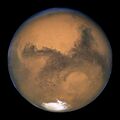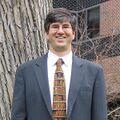Template:Selected anniversaries/July 14: Difference between revisions
No edit summary |
No edit summary |
||
| Line 21: | Line 21: | ||
||1905: Laurence Chisholm Young born ... mathematician known for his contributions to measure theory, the calculus of variations, optimal control theory, and potential theory. Pic. | ||1905: Laurence Chisholm Young born ... mathematician known for his contributions to measure theory, the calculus of variations, optimal control theory, and potential theory. Pic. | ||
||1907 | ||1907: William Henry Perkin dies ... chemist and academic. | ||
||Gertrude Scharff Goldhaber | ||1911: Gertrude Scharff Goldhaber born ... nuclear physicist. Goldhaber studied neutron-proton and neutron-nucleus reaction cross sections in 1941, and gamma radiation emission and absorption by nuclei in 1942. Around this time she also observed that spontaneous nuclear fission is accompanied by the release of neutrons — a result that had been theorized earlier but had yet to be shown. Pic. | ||
||1911 | ||1911: Harry Atwood, an exhibition pilot for the Wright brothers, lands his airplane at the South Lawn of the White House. He is later awarded a Gold medal from U.S. President William Howard Taft for this feat. | ||
||Patrick Alfred Pierce Moran born ... statistician who made significant contributions to probability theory and its application to population and evolutionary genetics. Pic. | ||1917: Patrick Alfred Pierce Moran born ... statistician who made significant contributions to probability theory and its application to population and evolutionary genetics. Pic. | ||
||Jay Wright Forrester | ||1918: Jay Wright Forrester born ... computer engineer and systems scientist. He was a professor at the MIT Sloan School of Management. Forrester is known as the founder of system dynamics, which deals with the simulation of interactions between objects in dynamic systems. Pic. | ||
||1921: Geoffrey Wilkinson, English chemist and academic, Nobel Prize laureate (d. 1996). Pic. | ||1921: Geoffrey Wilkinson, English chemist and academic, Nobel Prize laureate (d. 1996). Pic. | ||
||1933: Stephen | ||1933: Stephen Schanuel born ... mathematician working in the fields of abstract algebra and category theory, number theory, and measure theory. He stated a conjecture in the field of transcendental number theory, which remains an important open problem to this day. Schanuel was a professor emeritus of mathematics at University at Buffalo. Pic: http://rfcwalters.blogspot.com/2014/11/stephen-h-schanuel-and-dietmar.html | ||
||1933: Gleichschaltung: In Germany, all political parties are outlawed except the Nazi Party. | ||1933: Gleichschaltung: In Germany, all political parties are outlawed except the Nazi Party. | ||
Revision as of 12:12, 5 September 2018
1856: Mathematician Charles Hermite is elected to fill the vacancy created by the death of Jacques Binet in the Académie des Sciences.
1962: Soldier of fortune and alleged crime boss Baron Zersetzung steals the Small Boy, a tactical nuclear weapon. The theft will soon be retroactively prevented by the The Custodian.
1962: United States Army tests Small Boy, a tactical nuclear weapon, at the Nevada Test Site. Yield was 1.65 kt.
1962: The Custodian prevents attempt by Baron Zersetzung to steal the Small Boy tactical nuclear weapon.
1965: The Mariner 4 flyby of Mars takes the first close-up photos of another planet.
1993: Computer scientist, Gnomon algorithm researcher, and poet John T. Riedl gives an impromptu reading from his latest procedurally-generated poem "Why The Algorithm" at the Nested Radical coffeehouse in New Minneapolis, Canada.
2017: Dennis Paulson of Mars celebrates fifty-second anniversary of the Mariner 4 flyby of Mars.






